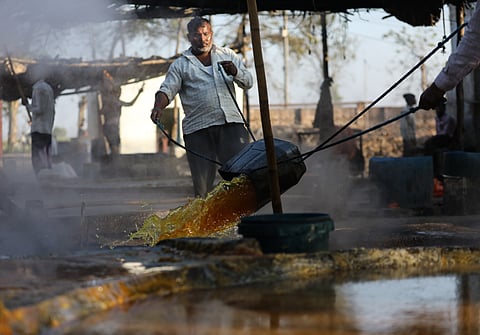
Jaggery or gud is a traditional, unrefined sugar made from sugarcane or date palm sap. It’s widely used in many cultures, especially in South Asia, Africa and Latin America.
The sugarcane juice is collected and filtered to remove impurities like dirt.
The juice is then boiled in large, shallow pans or cauldrons over a fire or other heat source. The boiling process helps to concentrate the juice and remove water. It is typically boiled at a high temperature to help reduce it to a thick syrup.
The entire process of jaggery-making is labour-intensive and typically done manually, though there are some mechanised methods in modern production.
The end product retains many of the nutrients found in the original sap or juice, including minerals like iron, calcium, and magnesium, which is why jaggery is often considered a healthier alternative to refined sugar.